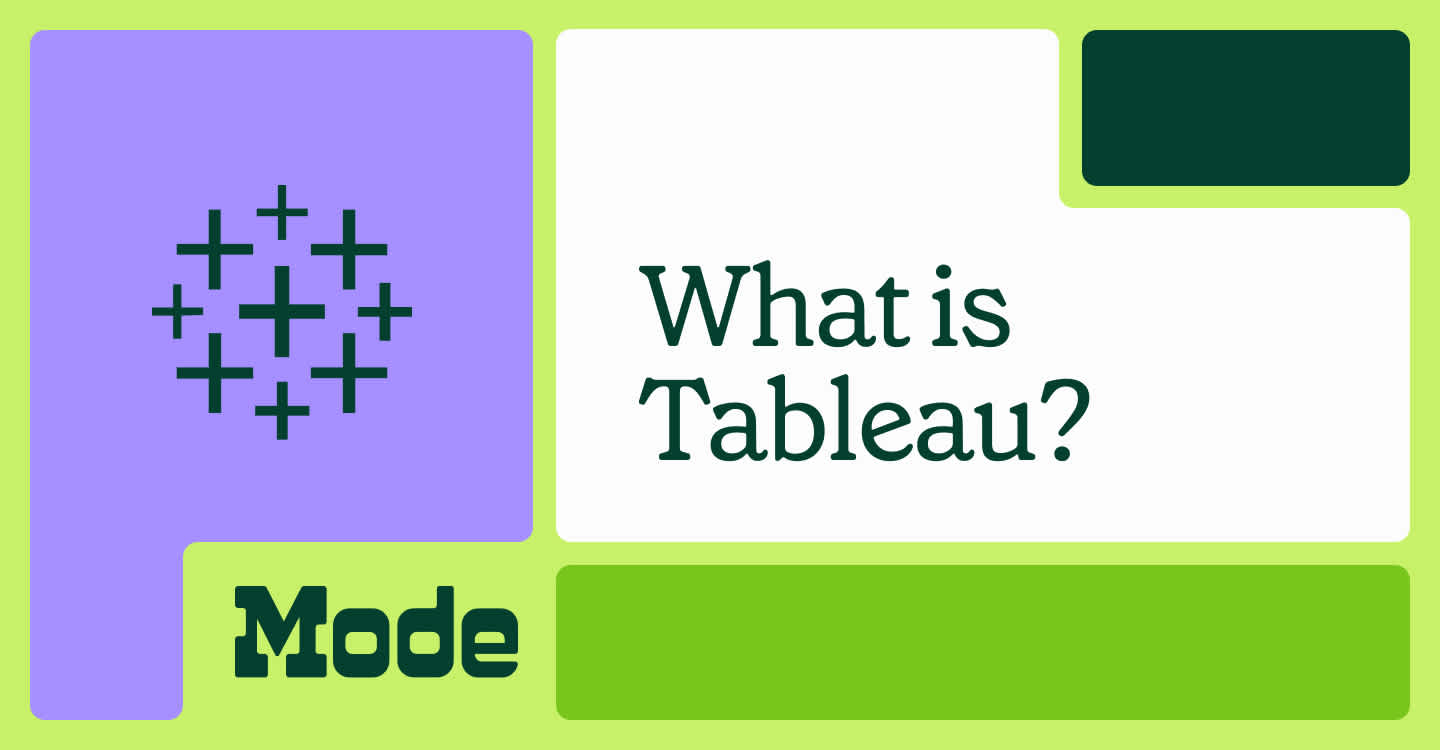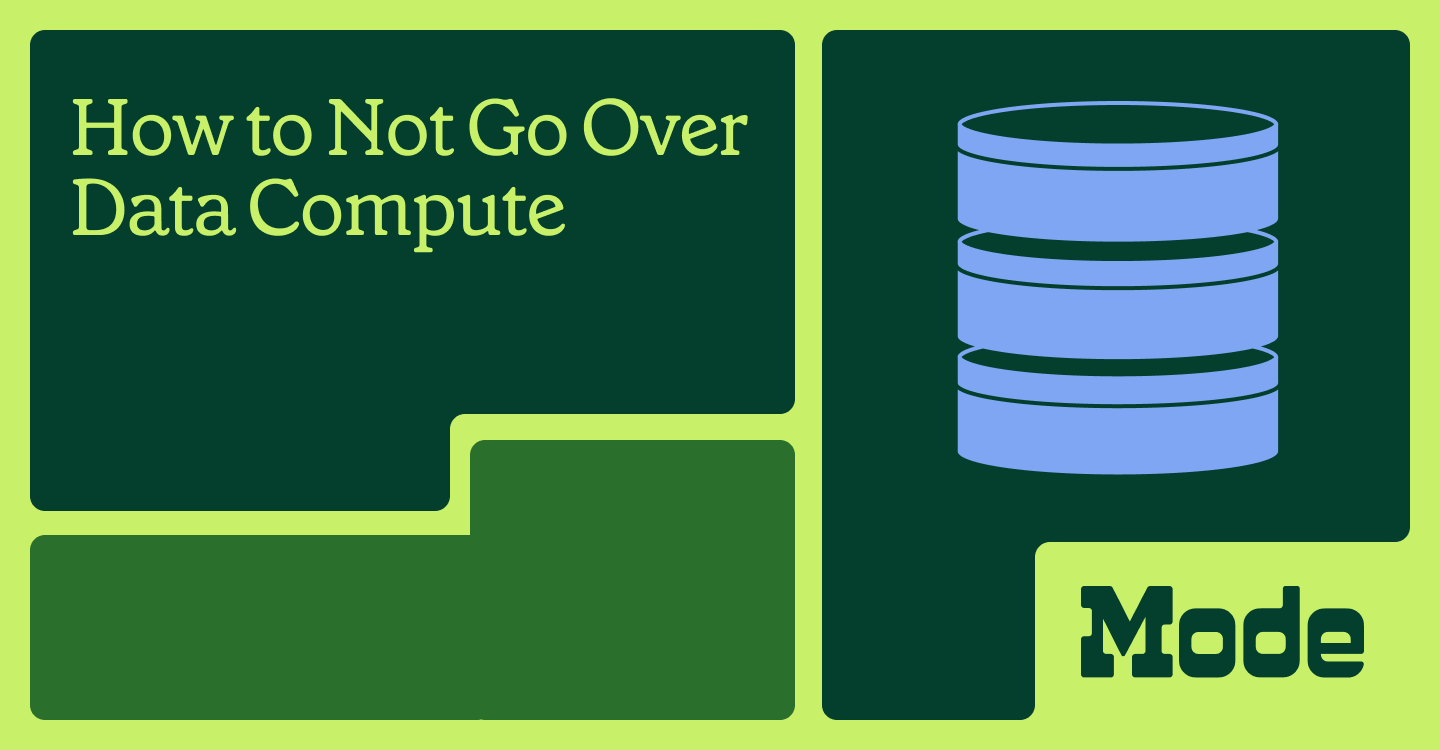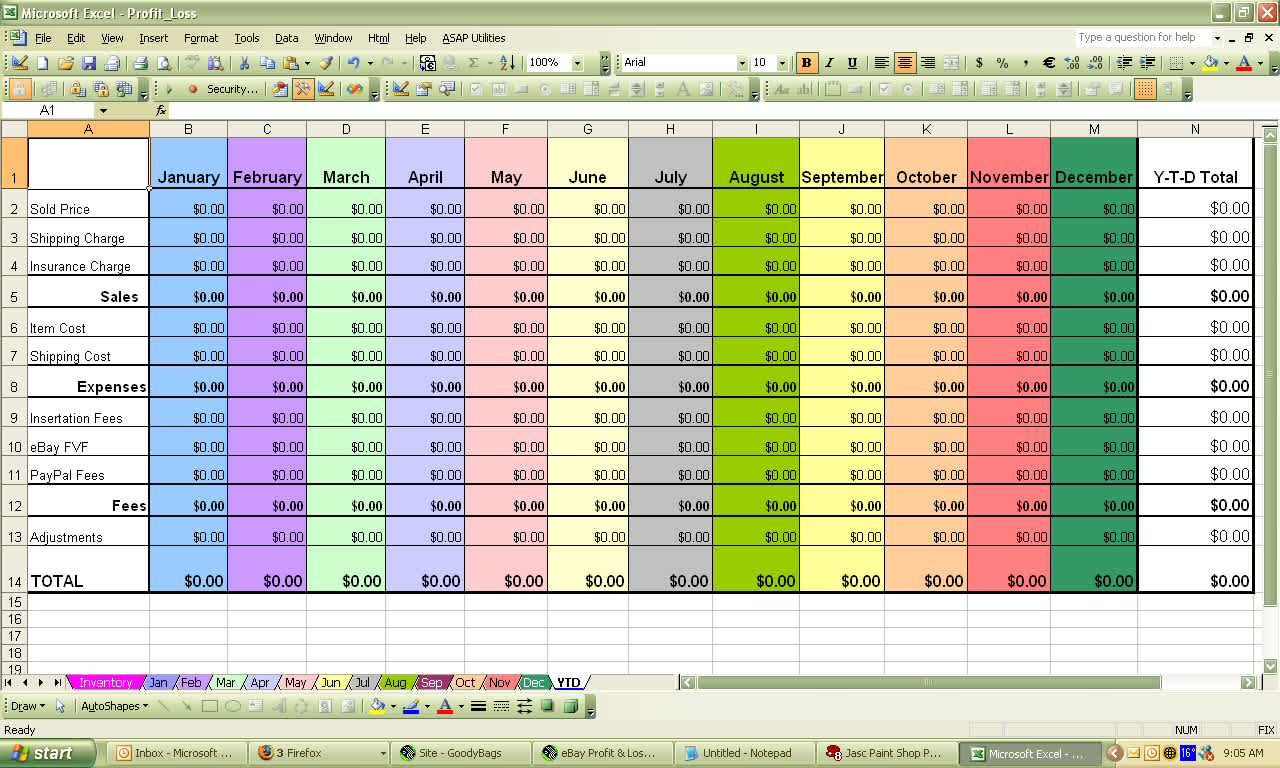What is Tableau & What is it Used For? An Analyst's Guide
Laura Dambrosio, Mode team writer
May 24, 2023
NaN minute read

If you're shopping for a business intelligence or data analysis tool, you've likely come across Tableau. Tableau is a BI tool that business leaders in marketing, sales, and customer success can use without knowing how to code. It’s well-known for its visualizations, but also offers some enterprise data management and infrastructure products. In this article, we'll go over what Tableau is, what its benefits and features are, what its use cases are, and whether it’s the best solution for your needs.
You can also skip down to learn more about Mode, one of the best Tableau competitors that was built for iterative, flexible processes and smaller teams of analysts (as well as enterprise data teams).
What is Tableau?
Tableau is an analytics solution that allows users to connect, analyze, and share their data. The software started as a visualization tool, growing into an enterprise platform with several deployment options until they were acquired by Salesforce in 2019. Today, its products are plugged into the greater Salesforce ecosystem and compete with Tableau alternatives like Looker, Sisense, or Qlik.
With Tableau, users can connect all their data sources and use visualizations alongside some of Salesforce’s Einstein capabilities to see trends and outliers in their data and make predictions about their business. For a long time, Tableau was a favorite for users who preferred a drag-and-drop interface for creating charts and visualizations—today some of its data management and [cloud billing] capabilities make it more of an enterprise IT tool.

Mode's Live Weekly Demo
Join our group demo to get a communal walk-through of Mode!
What is Tableau known for?
Tableau is most known for its wide range of data visualization capabilities, and is often used interchangeably with other traditional BI tools. Analysts use it to examine data with SQL and build data solutions for business decision-makers, who in turn use it to analyze data without having to code. The company also offers embedded analytics, so Tableau’s classic charts and graphs can be found in many other software products.
Since Tableau came onto the scene, the way companies think about data has evolved quite a bit, and this shows in some of Tableau’s shortcomings (which we’ll talk more about later). All in all, Tableau is still a very strong enterprise visualization tool that helps business users see the data they need to do their jobs well.
What are some common use cases for Tableau?
Business stakeholders commonly use Tableau to see standard KPI reporting for marketing, sales, and customer success. Especially since Salesforce Data Cloud brought Tableau’s visualizations into the greater fold of their Customer 360 Platform, it’s a staple for teams who need quick access to departmental metrics. With Tableau, business users can build a wide variety of visualizations to see trends or filter and drill down into data.
Analysts also work with business stakeholders to create reporting and dashboards for their use cases. They often use SQL to manipulate data in Tableau, but if they want to use Python or any other language, they have to work in another tool.
What products and features does Tableau offer?
Tableau provides several products and offerings designed to help with data analytics and visualization. These include:
Tableau Cloud: The new version of Tableau Online offers a fully-hosted, cloud-based analytics solution. Customers can use it to prepare, author, analyze, publish, and share data in one place. It comes as part of the Tableau Creator package, which also includes Tableau Desktop and Tableau Prep Builder.
Tableau Desktop: The same visualizations and data tools are offered in a more controlled environment that’s great for companies with strict governance and security policies that don’t want to work fully in the cloud.
Tableau Prep Builder: A tool that helps to prepare your data for analysis by combining, shaping, and cleaning your data. It's included as part of the Tableau Creator license.
Tableau Server: This is a self-hosted solution, ideal for organizations with IT resources that want to host Tableau within their own IT infrastructure.
Data Management and integrations: Tableau has some built-in features that help with centralized governance, visibility, and control, including automated authentication and permissions management. Users can also take advantage of integrations with tools like Slack, which bring data to more daily conversations and workflows.
As is standard with enterprise data tools, Tableau/Salesforce also offers training videos, a community platform, and cloud support to customers (though in recent months users have indicated a big dropoff in support and rely mainly on the community for answers), including an "Exchange" where users can access resources built by both Tableau and third-party partners. You can check out more details on Tableau’s pricing for these features here.
How does Tableau integrate with various data sources?
Tableau has a collection of native connectors that connect to databases, spreadsheets, cloud services, web services, and more. For more complex data sources, Tableau also offers a wide range of third-party connectors and APIs. This is pretty standard for an enterprise data platform, but the reach of the Salesforce platform also makes it a good fit for large ecosystems with well-defined objectives around customer data.
How does Tableau handle large datasets and optimize performance?
Like other data solutions built for the enterprise, Tableau can maintain a high-performance level even with very large datasets. Hyper uses proprietary dynamic code generation (their own faster version of SQL, essentially) and like Mode, an optimized in-memory data engine that can handle billions of rows of data.
While the speed of processing data is important, it isn’t the only thing growing companies need. If you’re looking for fast, flexible collaboration and iteration, Tableau might not be enough. Some analysts struggle to quickly adjust underlying datasets or work with drag & drop features when they actually want to use Python.
Who uses Tableau?
Tableau was built to be simple for non-technical teams and stakeholders to use. Business decision-makers use the platform’s visualizations to optimize and scale their area of expertise—for instance, a supply chain leader might watch trends and anticipate disruptions in order to keep goods flowing, or reduce bottlenecks. Sales teams who work daily in Salesforce to understand prospects might be looking at Tableau-built dashboards that show account tracking, quarterly results, top accounts, opportunity overview, opportunity tracking, and marketing leads.
Analysts use Tableau too, of course, although the product has some serious limitations around model development, complex analysis, and collaboration. Since Tableau is optimized for visualizations, analysts have to use other tools to build data models, analyze using Python, etc. On the collaborative front, it’s harder for cross-functional teams to iterate together and build an ongoing culture of data—work is typically done in silos, then the dashboards or visualizations are made available, and that’s what the end user has to work with for a while.

Opinion: How Tableau Falls Short of It's Promise by Siloing Data Teams
There’s also the size factor—Tableau users often work at large enterprises with rigid workflows and processes, especially those tied to their Salesforce deployment. But analysts at smaller companies need a great deal of flexibility and often can’t afford multiple data analysis or BI platforms, so they often switch to another solution once they realized they need to do more than build visualizations with SQL.
Is Tableau the right choice for data analysts?
There are a few points, pros, and cons that will help you understand whether Tableau will work for your use case.
Strong visualizations and embedded analytics
Tableau’s visualizations can be used by internal business stakeholders or embedded into other software products. End users will likely find data analysis to be familiar and intuitive—they’ve probably worked with the same kind of graphs and charts in other apps. However, analysts may find it tedious to change their embedded analytics products once they’ve been deployed, since they have to work outside of Tableau to modify the underlying models.
Enterprise capacity, but not flexibility
For larger companies, the desire to process large volumes of data quickly might outweigh the desire to use different models or languages on one platform. But for analysts at startups or those who need to create their own unique, collaborative workflows, Tableau is a little rigid.
Cumbersome iteration
Another issue with Tableau that analysts often experience is that once you put a model into production, it’s hard to change. When the goal is a fairly established process, like building a sales dashboard, this doesn’t always present problem. But if soon analysts need to deploy a new version of their datasets or model, the process becomes tedious. Explorations and iteration happens in another platform, like Mode, then it’s back to Tableau to finish the job.
Analysts tackling lesser-known questions need to go back and update their models and products more frequently. For example, teams working on new product iteration (like Ibotta in this case study) don’t necessarily know what to track or what will move the needle at first. They need to be able to change the model as they learn, factor in new findings, and instantly update their visualizations to reflect changes. This only works when the analytics team can access a combination of SQL, visualizations, and collaborative features as needed.
Platform-jumping and cost creep
To do certain things, like data extraction or model building, analysts have to work outside of Tableau. That makes the tool a valuable part of a larger data toolset, but not so useful as a single, unified data platform for companies that only want to invest in one.
All this tool switching means a higher cost of ownership for your data stack. Smaller companies that need to be agile and budget-conscious will have trouble with Tableau in this respect.
Roadblocks to a data culture
Most analytics vendors, Tableau included, talk about building a culture of data (and so do we!). But some of the things we just mentioned hinder analysts’ ability to do so in practice. If you have to jump from tool to tool, or create a large backlog to iterate and deploy a model, or can’t write in your preferred language, it’s very hard to instill data into everyday work and cultural values.
Here’s one example of what happens when Tableau falls short— read this Domain case study to get to know a data team that needed more than what Tableau offered.
Another issue is that Tableau’s pricing structure tends to build a culture of data producers and data consumers. With Mode, on the other hand, any user can move up and down the technical spectrum depending on their needs.

Mode for Startups
Grow your startup without having to worry about outgrowing your analytics platform.
Mode: A Tableau alternative for modern data teams
Today’s marketplace requires modern business intelligence tools that prioritize a user-first choice of analysis including SQL, Python, and R-notebook workflow. Like Tableau, Mode lets users build beautiful visualizations and enables no-code, self-serve options for business users. Mode is different from Tableau in that it’s built for faster iteration, letting analysts seamlessly switch between a cloud-based SQL Editor and connected Python notebooks.
What are the features of Mode vs. Tableau that make it stand out against the popular visualization tool? For one, workflows for building data models (the analyst side) and using visualizations and dashboards (the business user side) are connected on a single platform. Therefore it’s possible to only invest in one data solution, scaling from the needs of a small team to an enterprise as you grow.
Fast, secure infrastructure without the hangups
Like Tableau we’ve built an incredibly fast data engine, Helix, on robust cloud BI architecture that’s fit for any large enterprise. But Mode has perfected the fast and flexible approach for analysts who are running quickly at startups and high-growth companies too—this is what sets Mode apart from traditional BI tools and enables modern business intelligence at growing organizations.
Easy ad hoc analysis and reporting
With Mode, analysts can hop between using Python, R, or SQL in a shared notebook, making notes and adding context for collaborators as needed. Ad hoc analysis is easy in this scenario, since there’s the flexibility to work in whatever way is most comfortable for each user.
Business users don’t have to wait for answers either. Anyone can run a report in Mode or explore an existing one and see new findings, freeing up analysts to keep working on hard problems and innovative data products.
Delivering the polished executive report
Mode customers love that they can deliver intuitive, beautiful executive dashboards with the same platform they use to run deep data analysis and develop models. Stakeholders on any go-to-market team can build a dashboard with KPIs execs care about, then send it directly to them in Slack, as a link via email, or even as a pdf.
Enabling data-savvy stakeholders
Some organizations, especially scrappier and smaller ones, may have a smaller data team. Thus, they may have stakeholders who operate more as analysts on each go-to-market team, a data team for whole company, and perhaps finance and operations-focused data professionals who act as liaisons across teams. Mode brings all of these team members onto one unified platform, eliminating the silos that still slow down so many data teams today.
Award-winning support
While Tableau has a large community with docs and user-generated content, some users struggle to get direct support and personalized guidance for a specific problem. At Mode, our support team is always available to work through issues or offer best practices for your use case. We’re here as a partner as well as a vendor, and that shows in our customers’ feedback and recent customer success awards.
To learn more about Mode or sign up for a free trial, go here.
Get our weekly data newsletter
Work-related distractions for data enthusiasts.




